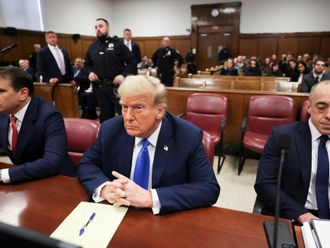Washington: The average premium for benchmark 2017 Obamacare insurance plans sold on Healthcare.gov rose 25 per cent compared with 2016, the US government said on Monday, the biggest increase since the insurance first went on sale in 2013 for the following year.
The average monthly premium for the benchmark plan is rising to $302 (Dh1,109) from $242 in 2016, the Department of Health and Human Services said. The agency attributed the large increase to insurers adjusting their premiums to reflect two years of cost data that became available.
The government provides income-based subsidies to about 85 per cent of people enrolled, and those credits will increase with the higher premiums.
It said 72 per cent of consumers on HealthCare.gov will find plans with a premium of less than $75 per month.
Large national insurers including Aetna Inc, UnitedHealth Group Inc and Anthem Inc have said they are losing money on the exchanges, created under President Barack Obama’s national health care reform law, because patient costs are higher than anticipated and enrolment is lower than forecast. Both UnitedHealth and Aetna have pulled out of the exchanges for 2017.
As a result, consumers will have fewer plans to choose from.
In 2017, in five states there will be offerings from only one insurance company. The government expects average monthly 2017 enrolment of 11.4 million people, up about 1 million from 2016.
Obama acknowledged last week that the law is not working perfectly but said the problems could be fixed if lawmakers created a government-run health insurance option that would help US states where there is little or no competition.
Premium increases have become fodder for the presidential race, as Republican candidate Donald Trump calls for the repeal of the Affordable Care Act if he is elected and Democrat Hillary Clinton calls for expanding it.
The news “shows why the entire programme must be repealed and replaced ... Mr Trump knows the only way to fix our nation’s failing health care system is complete and total reform,” said Trump communications adviser Jason Miller.
The government agency said the 2017 premium increase comes after two years of very low increases in the marketplace for the second-lowest cost “silver” plan, the benchmark plan used to calculate cost-sharing subsidies.
Average premiums for the silver plan increased 2 per cent in 2015 and were up 7 per cent in 2016, the agency said.
The figure reflects premiums on Healthcare.gov, the federally run website that sells plans for about two-thirds of the states. Including four states and the District of Columbia, which run their own insurance marketplaces, and those that have reported data, the average premium rose 22 per cent, the agency said.












